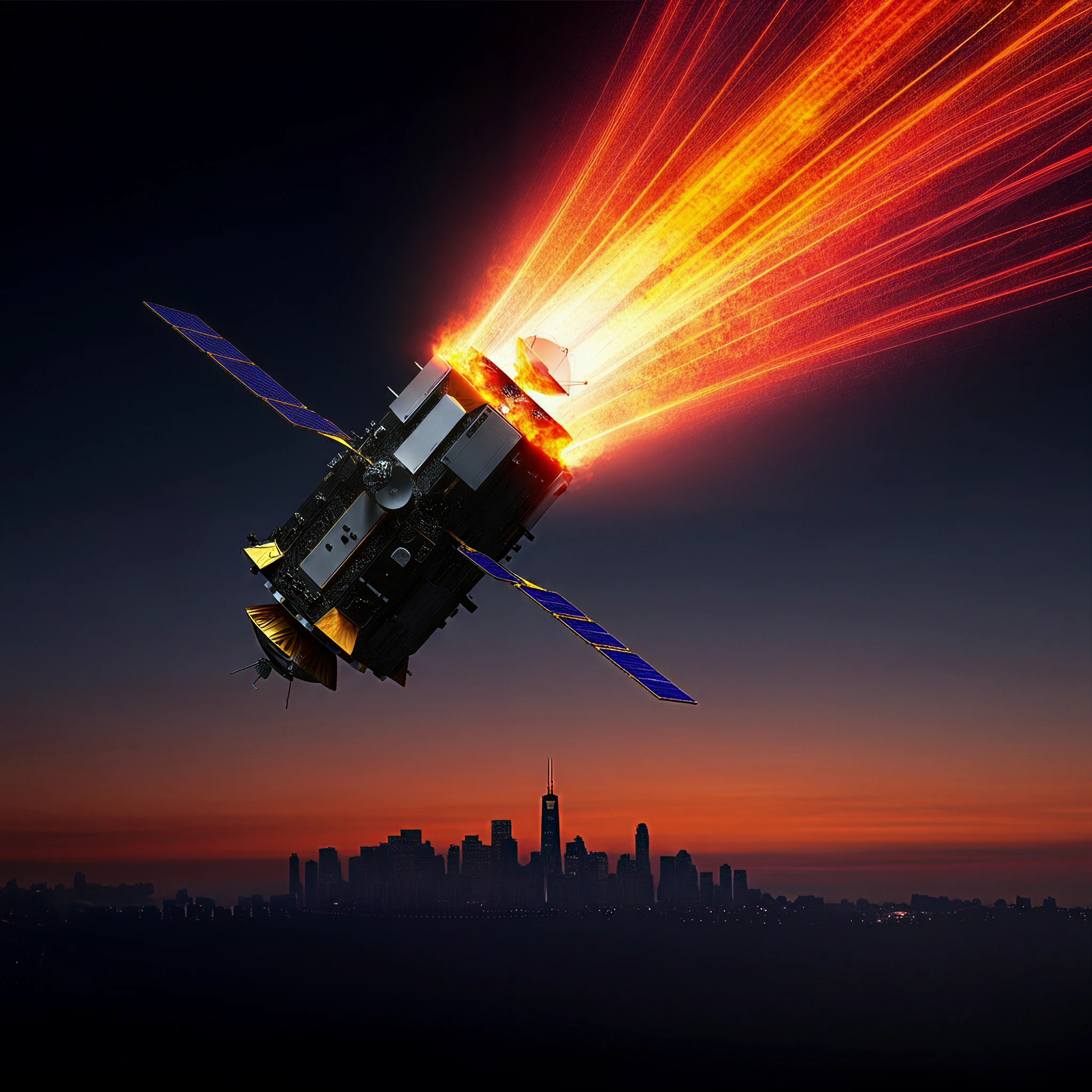Asteroid alerts from space agencies tend to grab global headlines, but this time, the spotlight falls on a man-made object hurtling towards Earth. Weighing nearly half a ton, Kosmos 482, a Soviet-era spacecraft, is poised to re-enter Earth’s atmosphere between May 8 and May 11. But before you brace for impact, let’s explore what this spacecraft is, why it’s crashing, and whether it poses a real risk to us all.
What Is Kosmos 482?
Kosmos 482 is a relic of the ambitious space age of the 1970s. Originally launched by the Soviet Union on March 31, 1972, the spacecraft was intended to carry out a groundbreaking mission to Venus. However, plans went awry when a timer malfunction caused a premature engine shutdown, leaving the spacecraft stranded in Earth’s orbit. For over five decades, Kosmos 482 has been a silent wanderer in space, a testament to human ingenuity and occasional error.
The spacecraft was designed to endure the harsh Venusian conditions, including extreme heat and atmospheric pressure. Ironically, this durability is now a key factor in its descent, as experts predict that large portions of Kosmos 482 will survive the fiery re-entry through Earth’s atmosphere, increasing the risk of impact.
Re-Entry Details
Kosmos 482 is predicted to re-enter Earth’s atmosphere between May 8 and May 11. The exact impact site, however, remains elusive due to the uncertainties surrounding orbital decay and re-entry dynamics. Scientists have narrowed the potential landing zone to areas between latitudes 52 degrees North and 52 degrees South. This vast region spans much of Earth’s surface, including parts of Europe, North America, South America, Africa, and Australia.
While Earth is primarily covered by oceans, making an ocean splashdown the most probable scenario, it’s worth noting that a small risk remains of the spacecraft landing in a populated area. If Kosmos 482 re-enters overhead during dawn or dusk, observers may see it as a bright, slow-moving object streaking across the sky, possibly resembling a fragmenting meteor as it breaks apart.
Potential Risks
Kosmos 482’s descent poses unique risks. At an estimated weight of 500 kg (approximately 1,000 pounds), the spacecraft’s durability is a double-edged sword. Its robust design, intended to withstand Venus’ harsh environment, makes it likely that parts of Kosmos 482 will survive atmospheric re-entry. Upon impact, the object could strike Earth at speeds exceeding 240 kilometers per hour, potentially causing significant localized damage.
The risk of Kosmos 482 crashing into a populated area, though real, remains minimal. Statistically, Earth’s vast uninhabited regions—including oceans and remote landscapes—reduce the likelihood of human casualties. However, in the rare event that it does land in a residential area, there could be considerable consequences.
Monitoring Efforts
Given the unique nature of this re-entry, scientists and organizations worldwide are closely monitoring Kosmos 482’s trajectory. Sophisticated tracking systems and satellites are being used to predict its path as accurately as possible in the final days before re-entry. The tracking efforts aim to provide early warnings and mitigate risks in case the spacecraft’s trajectory shifts towards populated areas.
Space agencies have also advised the public to report any sightings of unusual, bright, slow-moving objects in the sky during the predicted re-entry period. Such observations can help refine trajectory models and inform necessary action.

Illustration for representational purposes.
A Global Reminder
Kosmos 482 is not just a spacecraft; it’s a historical relic and a reminder of humanity’s enduring quest to explore space. Its unintended return to Earth highlights the ongoing challenges and responsibilities that come with space exploration. Questions about the safe disposal of space debris and further mitigation efforts are more pertinent now than ever.
For science enthusiasts and space followers, Kosmos 482’s dramatic re-entry underscores the fascination and unpredictability of objects orbiting our planet. And while the risks posed by this spacecraft are relatively low, its story is a significant chapter in the broader narrative of space exploration.
Stay Tuned
Want to learn more about Kosmos 482’s descent or keep up with developments in space science? Follow updates from space agencies and news outlets as scientists continue to track its trajectory. And if you’re lucky enough to spot the spacecraft in the sky this week, you’ll witness a once-in-a-lifetime spectacle—not an asteroid, but a piece of history returning to Earth.
Suggested Visuals
- Vintage Soviet Space Imagery: Photos of Kosmos 482’s era to contextualize its origins.
- Impact Zone Map: An illustration of the latitudes 52 degrees North to 52 degrees South, showcasing the potential impact area.
- Artist Renderings: Conceptual visuals of Kosmos 482 re-entering Earth’s atmosphere, highlighting the fiery spectacle of re-entry.
- Tracking Interface Screenshot: A look at how scientists monitor the spacecraft’s position in real-time.
Prepare to be reminded of humanity’s cosmic reach and limitations as Kosmos 482 writes the final chapter in its five-decade-long story above our skies.








